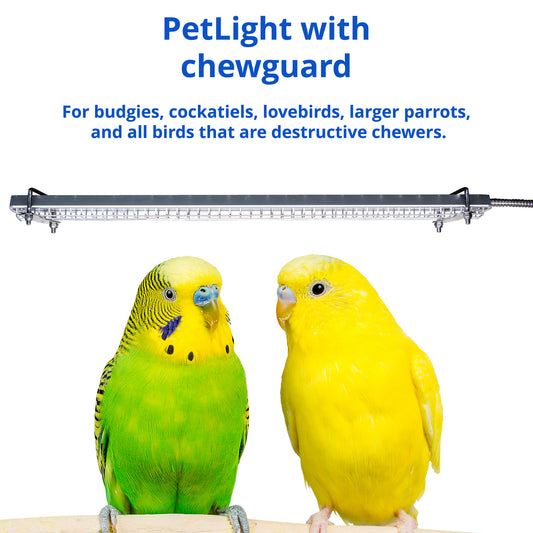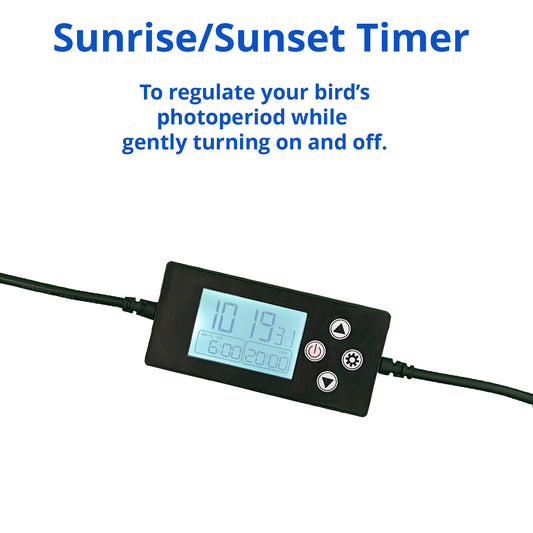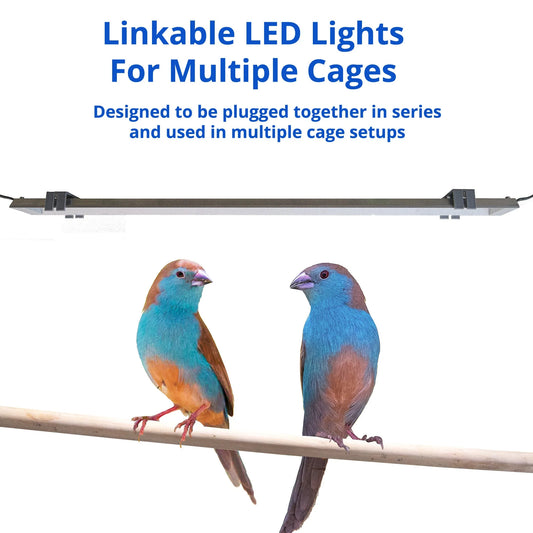What Makes Bird Vision So Unique (and What That Means for Lighting)
Share

Birds don’t just see more color, they see the world in ways humans can’t imagine. That includes how they detect flicker, brightness, and movement. So when it comes to lighting a bird’s space, what looks “bright enough” to us might not even register as effective to them.
Let’s take a closer look at what makes bird vision so special - and why proper bird lighting needs to match their specific needs.
Birds See Flicker That Humans Can’t
Birds are highly sensitive to flicker. What appears as a steady glow to our eyes, like from common LED bulbs or fluorescent tubes, may look like a constant strobe to a bird. This is because birds have a much faster flicker fusion rate (the threshold at which flickering light appears solid).
For indoor birds, lighting that flickers can lead to stress, disrupted rhythms, and avoidance of certain parts of the cage. That’s why high-quality bird lighting should always be flicker-free and purpose-built for avian vision - not just human comfort.
Color and Clarity: A Wider Spectrum of Sight
Birds can see more of the light spectrum than humans, including parts of the ultraviolet range. But that doesn’t mean indoor lighting should include artificial UVB. What birds benefit from most indoors is a rich, full spectrum of visible light that mimics natural daylight without the dangers of artificial UV radiation.
Household lights and repurposed reptile bulbs often miss the mark here. They may be too narrow, too blue-heavy, or include UVB that’s not safe for birds. That’s why true bird lighting should focus on visible spectrum richness - not UV claims.
Room Lighting Isn’t Enough
A bright room may look fine to us, but that doesn’t guarantee your bird is getting the light it needs inside the cage. Shadows from bars, placement in corners, and the direction of household lights all reduce how much useful light enters the bird’s immediate environment.
That’s why mounting lights directly to or above the cage is essential. It ensures consistent exposure to quality light during the 10–12 hours per day birds instinctively expect.
What the Right Bird Light Looks Like
Here’s what makes a lighting setup that works for a bird’s vision:
✅ Flicker-free performance (a must for avian comfort)
✅ Broad-spectrum visible light without artificial UVB
✅ Mounted on or above the cage for even exposure
✅ Consistent on/off timing for 10–12 hour day/night rhythm
✅ Safe 24VDC system with stainless steel conduit for chew protection
These aren’t optional extras - they directly impact how clearly and comfortably a bird experiences its space.
⚠️ Not All “Full Spectrum” Lights Are Equal
Some bulbs are labeled “full spectrum” but are made for reptiles or plant growth, not for the visual needs of birds. They may include UVB, flicker, or color profiles that disrupt more than they help.
A well-designed bird light isn’t just “bright.” It’s tuned to how birds actually see and placed where they live — inside the cage.
Final Thoughts
Birds don’t see like we do. And that’s exactly why lighting designed for people - or even for other animals - can fall short.
With flicker-free, cage-mounted lighting that delivers a rich visible spectrum (and skips artificial UVB), you give your bird a daily experience that feels natural, predictable, and clear.



